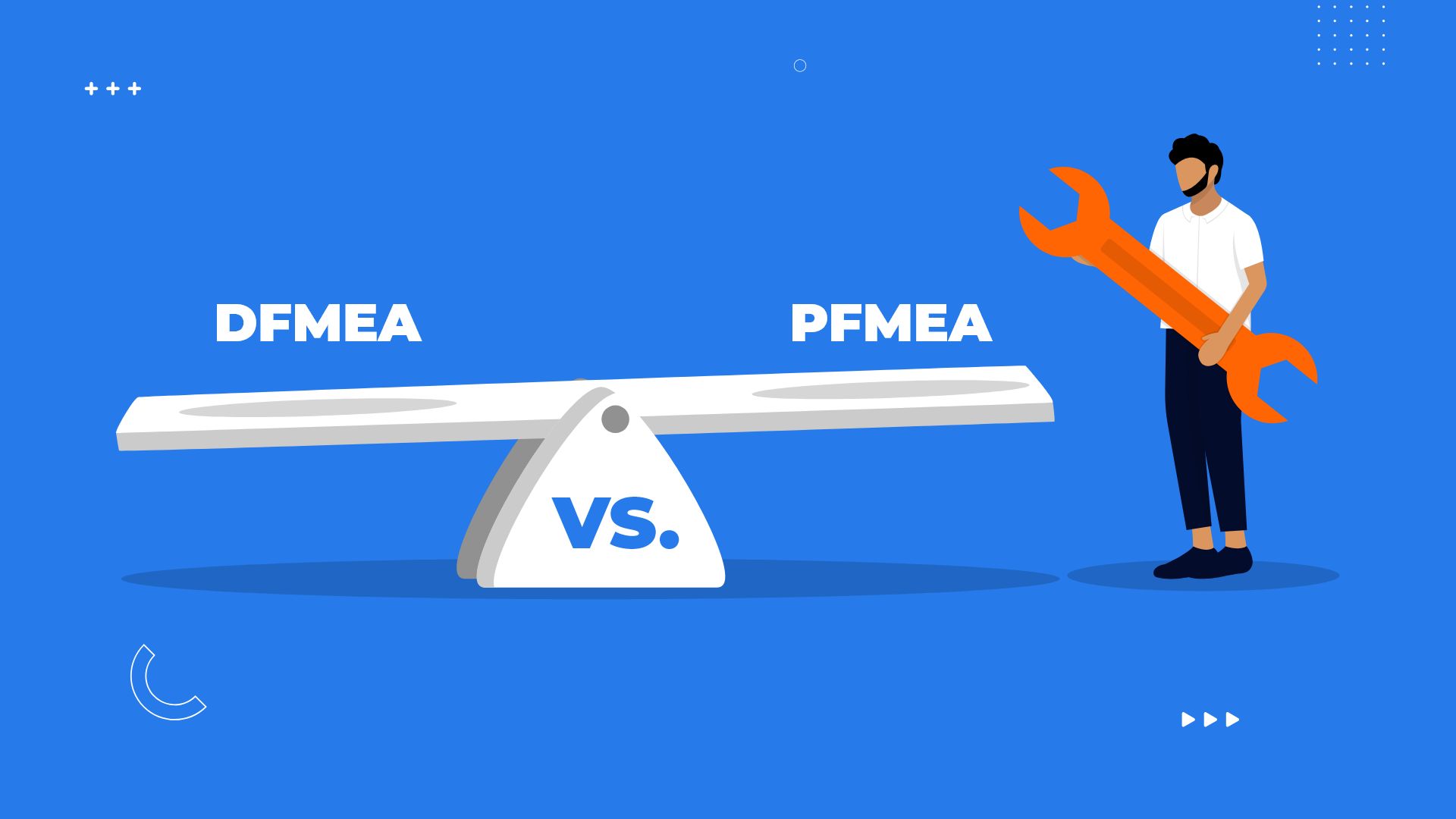Ensuring high product quality and process reliability is essential in business operations. To achieve this, organizations rely on various tools and techniques, among which Failure Modes and Effects Analysis (FMEA) stands out. FMEA is a structured approach to identifying potential failure modes and assessing their impact on the product or process. However, FMEA isn’t a one-size-fits-all solution; it comes in two distinct forms: Design FMEA (DFMEA) and Process FMEA (PFMEA).
In this article, we will understand how these two FMEA approaches help organizations to achieve more reliability and efficiency.
What is DFMEA?
Design Failure Modes and Effects Analysis (DFMEA) is a systematic approach to identifying potential failure modes within a product design and evaluating their effects on the product’s performance. The primary goal of DFMEA is to improve the design to ensure that it meets customer requirements and functions reliably in the intended environment.
Key aspects of DFMEA:
- Scope: Focuses on design elements, such as components, assemblies, and systems.
- Objective: Identifies design-related failure modes, their causes, and effects to enhance product reliability and performance.
- Timing: Conducted during the design phase before production begins.
- Team Involvement: Typically involves design engineers, product developers, and other stakeholders involved in the design process.
What is PFMEA?
Process Failure Modes and Effects Analysis (PFMEA), on the other hand, focuses on the manufacturing processes used to produce a product. PFMEA aims to identify potential failure modes in the production process, assess their impact on product quality, and develop strategies to mitigate these risks.
Key aspects of PFMEA:
- Scope: Concentrates on manufacturing processes, including assembly, machining, and other production activities.
- Objective: Identifies process-related failure modes, their causes, and effects to improve process reliability and reduce defects.
- Timing: Conducted during or after the design phase, typically before or during production.
- Team Involvement: Involves process engineers, production managers, quality assurance personnel, and other stakeholders involved in manufacturing.
Key differences between DFMEA and PFMEA
Understanding how different analytical approaches contribute to quality and reliability is crucial for any successful product development and manufacturing process. While DFMEA and PFMEA are both essential tools in risk management, each plays a distinct role. To fully leverage their benefits, it’s helpful to grasp the unique aspects of each approach and how they address various stages of the product life cycle.
Focus are for both are quite different:
When we talk about DFMEA, we’re looking at the product’s design. It’s all about spotting potential design problems before they even hit the production line. The goal is to make sure the design is solid and ready for manufacturing.
On the flip side, PFMEA zooms in on the manufacturing processes. It’s about figuring out what could go wrong during production and fixing those issues to ensure the product comes out right every time.
Both differ with the objectives they solve:
The main aim of DFMEA is to tweak the design to prevent any performance or safety issues before production starts. It’s about catching problems early in the design phase. Meanwhile, PFMEA focuses on refining the production process to avoid defects and inefficiencies. It’s all about making sure the manufacturing runs smoothly and consistently produces high-quality products.
Each one happens at different timing within the process:
DFMEA happens early in the development process, right when the design is being worked out. It’s about addressing potential design flaws before you even get to production. PFMEA, however, takes place later—often during the planning stage or just before production kicks off. This timing lets you tweak the manufacturing process based on the final design.
The impact they create are divergent:
By improving design elements, DFMEA ensures the product performs well and meets reliability standards. It directly affects how the product works. PFMEA, on the other hand, enhances the manufacturing process, making sure that production is efficient and that the end product is consistently high quality.
How do DFMEA and PFMEA complement each other?
DFMEA and PFMEA are complementary tools that, when used together, provide a comprehensive approach to risk management in both product design and manufacturing. By addressing potential failure modes in both areas, organizations can:
- Enhance Product Reliability: DFMEA ensures that the design is robust, while PFMEA ensures that the manufacturing process consistently produces high-quality products.
- Reduce Costs: Identifying and addressing issues early in both design and production helps prevent costly rework, recalls, and customer dissatisfaction.
- Improve Customer Satisfaction: A well-designed product manufactured through a reliable process meets customer expectations and reduces the likelihood of failures in the field.
So, this is it…!!
When you use both DFMEA and PFMEA, you’re setting up your product and production for success. Curious about how to make these strategies work for you? Get in touch with us at contact@terotam.com and let’s explore the possibilities together!








